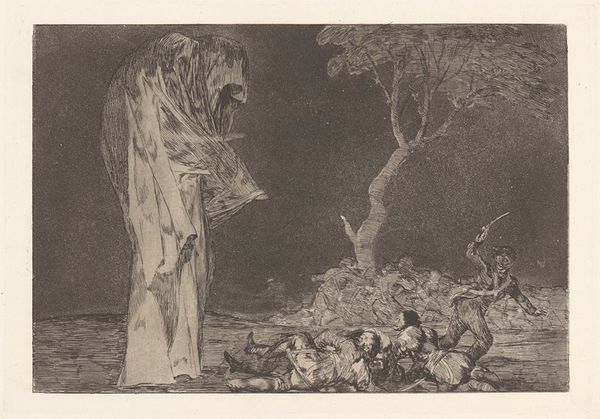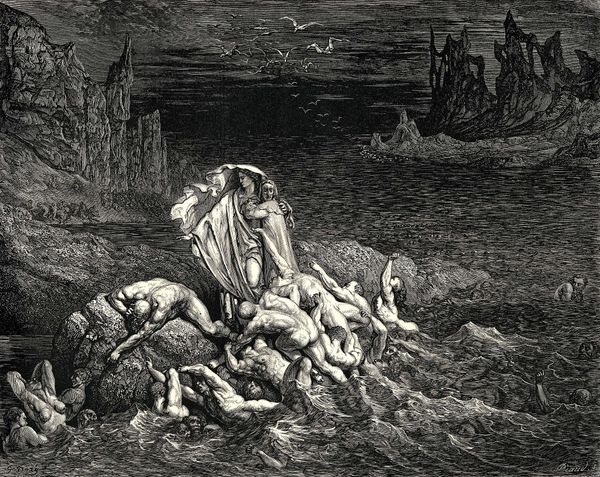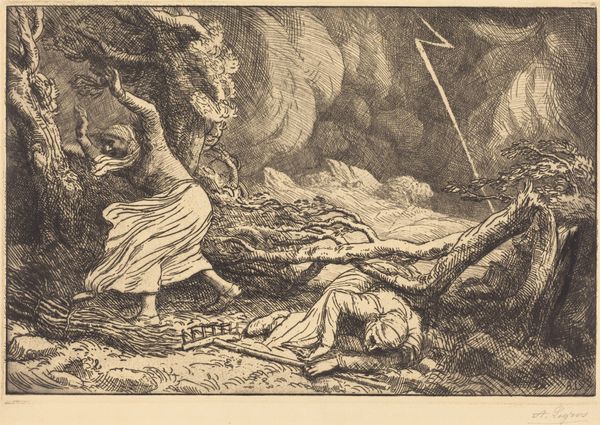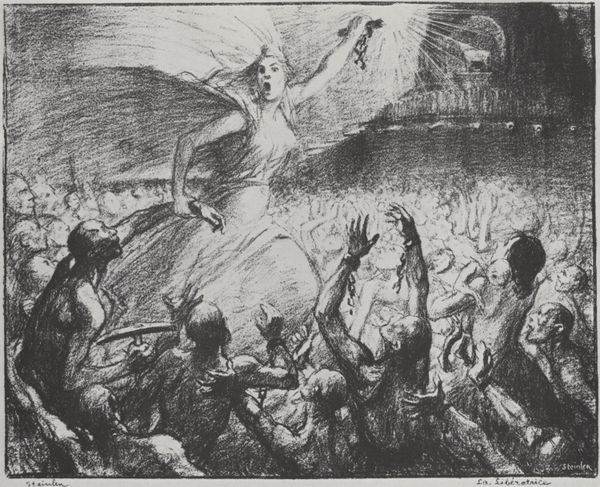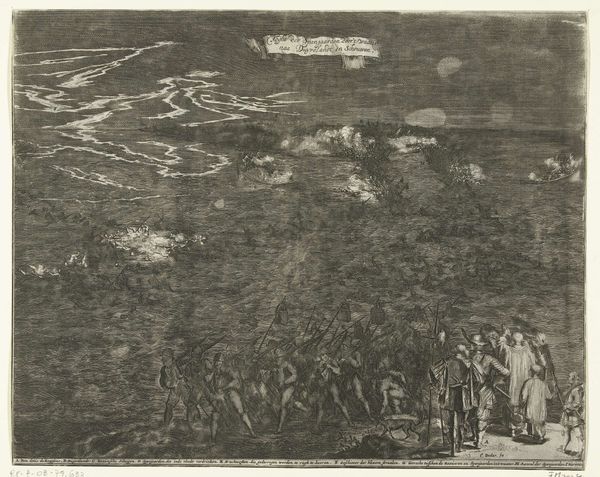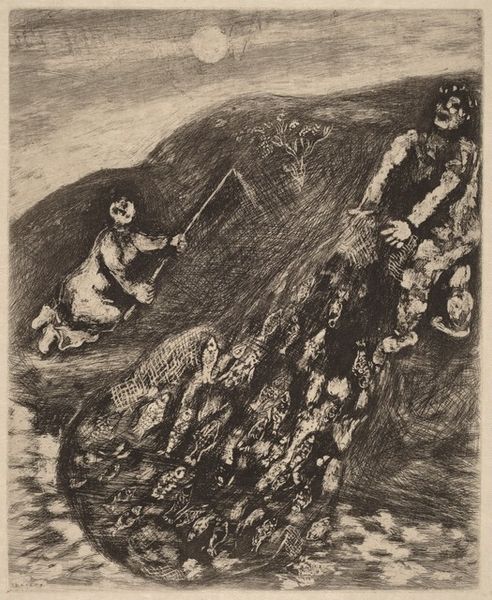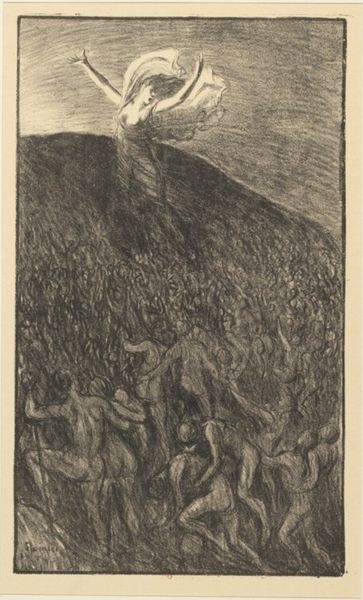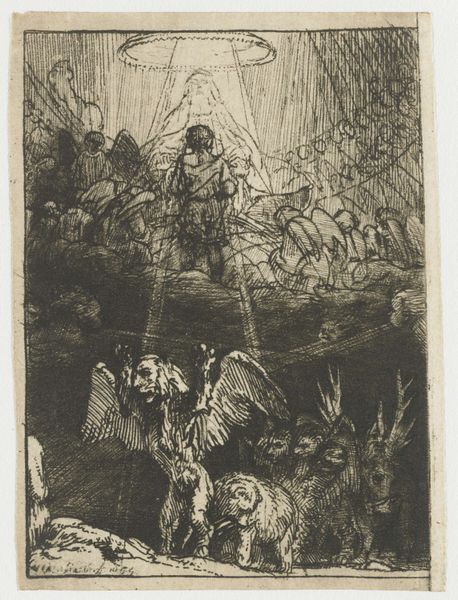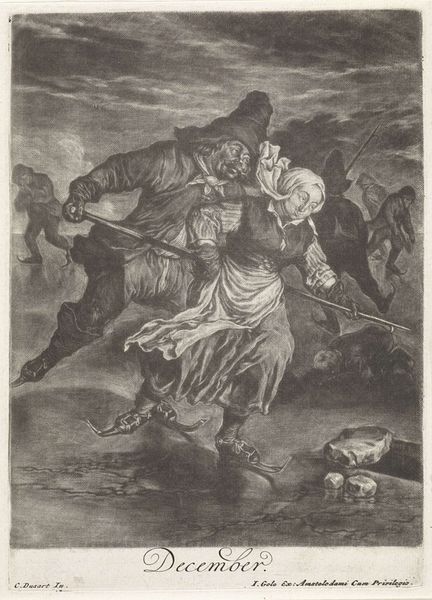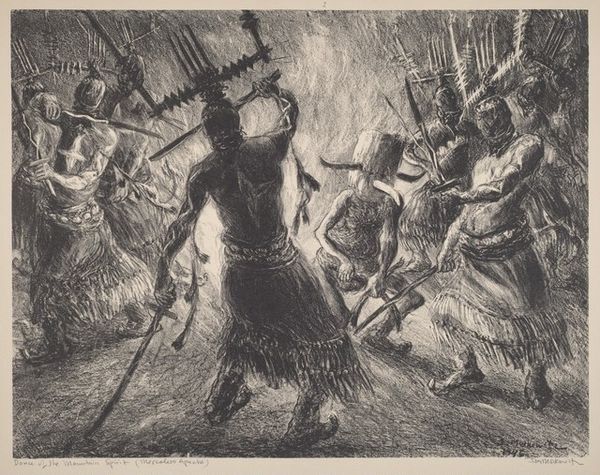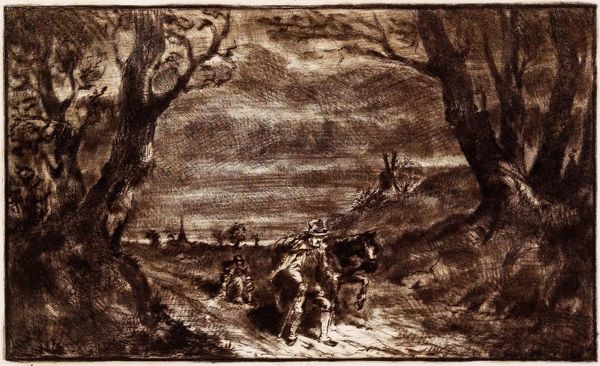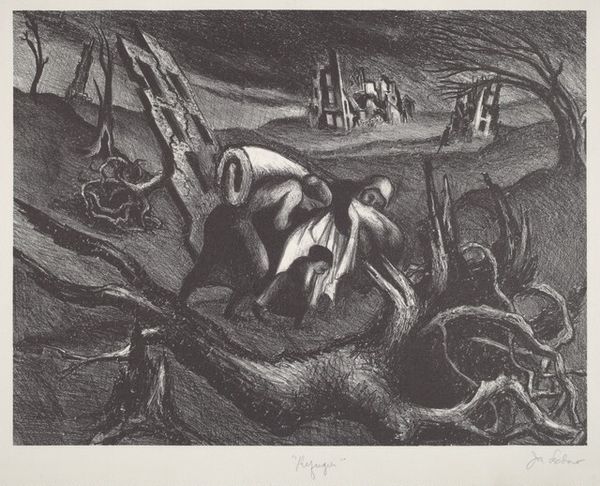
drawing, ink, pencil
#
drawing
#
ink drawing
#
allegory
#
landscape
#
figuration
#
ink
#
pencil
#
symbolism
#
history-painting
Dimensions: image: 18 5/16 x 22 1/8 in. (46.5 x 56.2 cm) sheet: 47.2 x 58.1 cm (18 9/16 x 22 7/8 in.)
Copyright: National Gallery of Art: CC0 1.0
Editor: This drawing, "Aux Victimes de la Guerre," or "To the Victims of War," made with ink and pencil by Georges Bertin Scott in 1904, is truly arresting. The desolate landscape and lifeless bodies evoke an incredibly somber mood. What do you make of the imagery, particularly the figures? Curator: Indeed. The entire composition resonates with symbolic weight, speaking to deeply rooted cultural anxieties and the trauma of conflict. Note the spectral figure emerging from the sea on the left. Editor: Yes, that skeletal figure in the boat stands out dramatically! What does that evoke for you? Curator: I read this as a symbolic representation of Death, a figure present across cultures, ushering souls to the afterlife. But observe how Scott contrasts this with the figure on the right, draped in white, seemingly offering a counterpoint. She carries a sign: "Humanity, Fraternity, Charity." These are the ideals challenged and decimated by war, wouldn’t you agree? Editor: That's a great point. So the drawing isn’t just about the horror, but also about what’s lost – a critique of war itself. Curator: Precisely. The artist uses allegory to reveal war's impact not only on individual lives, but also on collective values and moral foundations. This juxtaposition is very telling, creating a tension. Editor: I never would have considered the cultural memory embedded in these figures of Death and Hope so clearly without your insights. Curator: Symbols offer us a powerful entry point into understanding cultural endurance and transformations. I think this drawing becomes a powerful reflection on our shared humanity in the face of such destructive forces.
Comments
No comments
Be the first to comment and join the conversation on the ultimate creative platform.
